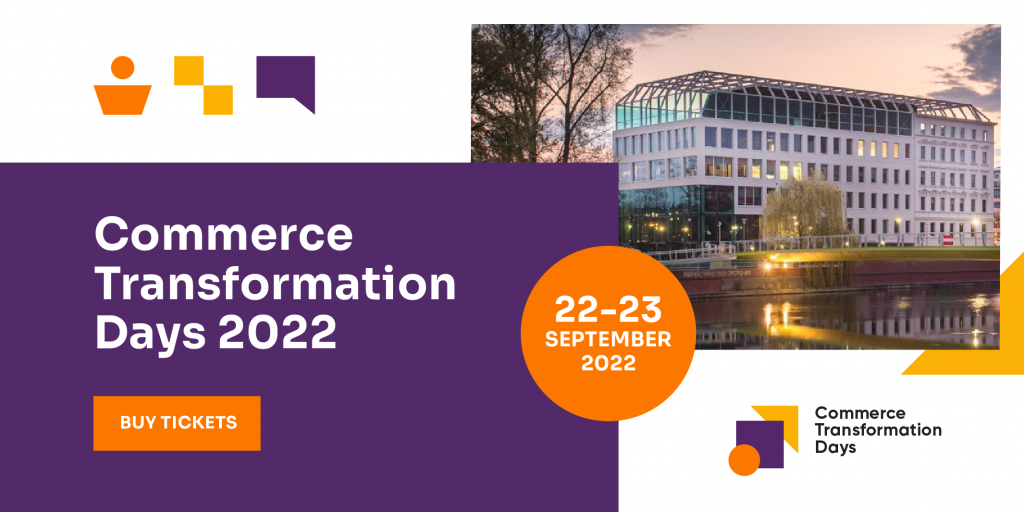Q-Commerce / Are Delivery Times The New Decision-Maker?
A few years ago, the very ideal of a 30-minute delivery would make most e-commerce stores balk. On the other side of the pandemic, however, consumer demand has changed – and so too has businessses ability to cater to it.
Customers have always wanted to buy better, cheaper – and now – faster.
So, how did we go from 2-3 business days to within 15 minutes, and just how wide spread are quick commerce businesses? Is ultrafrast delivery becoming the future of all e-commerce?
- What is quick commerce?
- What are the benefits of quick commerce?
- What are its main challenges?
- How does the q-commerce model work?
- What industries are investing – or should invest – in quick commerce?

What is Quick Commerce?
Quick Commerce – or Q-Commerce for short – is a subset of e-commerce focused on quick delivery. While traditional e-commerce may consider a 1-day delivery process as an efficient solution, quick commerce offers even greater speed and convenience, with products delivered within the hour.
Some are raising the bar even higher, promising delivery in 30 or even 15 minutes.
The Obvious Benefits of Quick Commerce
Keeping up with the competition is not the only reason to invest in the quick commerce model. In fact, there are a number of additional large, significant benefits for businesses, too.
Customer Experience
Ultimately, q-commerce benefits the customer the most. A fast delivery solves a consumer need efficiently. That also impacts consumer association with the wider brand – in a good way, of course 😉
Adaptable
The pandemic has shown that relying on traditional commercial operations is not a safe or viable option in the long run. Being able to adapt is essential. Q-commerce has enabled even the smallest of businesses to continue to meet the customer needs.
Addtional Revenue
Make no mistake, q-commerce isn’t just a replacement to e-commerce, but rather a complimentary stream. Research has shown that, especially during the recent pandemic, people have been willing to pay more for fast, convenient delivery. According to Deloitte, 50% of shoppers spent more for this very purpose.
On top of this, commerce companies must also consider the concept of micro fulfilment. Previously, when users needed something quickly, the would often opt-out due to minimum order fees. Now, with micro fulfilment options, such quick-grab sales are more accessible than ever.
The Local Advantage
With Q-commerce, companies based solely on the other side of the country can’t compete. This gives smaller, local businesses a chance to compete and earn their space in the surrounding community.
The Less Obvious Benefits of Quick Commerce
We can also identify a number of additional advantages that, while not as loud, can become definite value drivers over time.
Loyalty over Pricing
Quick, reliable delivery can be a key part of any commerce business model; we could even go so far as to say its a key part of the value proposition. In fact, if you have guaranteed availability, customers won’t even check the wider market just to save a few pennies.
Greener Brand Image
Customers also appreciate q-commerce companies that provide services via bicycle. Not only are these more convenient for quickly navigating cities, it’s also inline with the similarly growing e-commerce trend.
Of course, this also depends on how you’re restocking each distribution centre, but the end result is still positive. Rather than customers driving to you, you’re cycling to them.
Greater Accessibility
Not everyone can make it to brick and mortar locations everytime they need something. Q-commerce options enable not only quick delivery to someone’s home, but also demand fulfillment at a lower price point. For many, this can great improve their ability to acquire needed products. And such accessibility is good for both the company and the user.
Of course, for this to work, you also need to invest in accessible platforms and ordering systems, but companies should be doing that anyway 😉
Redefining “Local”
On the topic of accessibility, q-commerce also helps you to reach a wider audience. Previously, supermarkets or grocery stores were chosen based on convenience, amongst other factors. Physical proximity from your home was a key decision maker. Online, this isn’t so important, as the customer isn’t the one travelling, giving q-commerce stores the chance to reach a wider potential customerbase.
The Q-Commerce Model
Obvious, the better enable this business model, q commerce companies need to have a different set-up than previous solutions. For example:
- Brick and mortar stores favour lots of retail outlets, many of which utilize the same warehouses for maximum efficiency.
- E-commerce stores, on the other hand, focus on warehouses based on convenience, often choosing only a handful per country or region, and shipping via traditional logistics and delivery services.
- Q commerce companies, on the other hand, need lots of micro warehouses or operational centres, spread out across their target areas so that potential customers are never too far away to access the service.
Alongside warehouse or dark store distribution, companies also need to invest in the wider supply chain. Previously, the last mile – from the warehouse to the consumer’s door – was left to traditional postal or logistics services. This is an area that needs the most revamp…
The Main Challenges Behind Quick Commerce
Such a shift can’t happen over night. Working backwards, we can identify a few changes that companies need to make.
Implementing Fast Delivery
Waiting to load up vans or lorries is no longer fast enough. Depending on the scale of your business, you either need to invest in smaller vehicles, or even take a two-wheeled approach.
While large enterprises may want to invest in their own fleets, smaller companies should look to integrate with third party solutions that deliver goods on their behalf. This way, they’re only paying for deliveries made, rather than maintaining an active fleet and crew even when it’s unused.
Local Hubs
Regardless of which option you choose to deliver goods, you still need a series of localized warehouses that cover wide areas quickly. Here, brick and mortar stores have an advantage in that they can convert their retail stores into local hubs, but e-commerce stores need to invest in significantly more warehousing across their target regions.
This also comes with another challenge – remote regions. Justifying expansion in large cities is easy, but not everywhere boasts population numbers like New York. Depending on your market, this could have a minor or major impact.
Product Fit
A smaller warehouse also often results in a smaller range of products. Traditional e-commerce stores like to go wide, offering as much as possible, whereas localized dark stores need to keep active stock of as much as possible. In many cases, less is more, and priority should obviously go to those items that are in demand at such speed.
Demand Forecasting
Advanced data and automation is essential for quick commerce. Ensuring every smaller warehouse or distribution center is fully stocked is a balancing act. Different locations will need different goods at any given period. More than just restocking, anticipating this demand is another skill q-commerce companies will need to pick up. The right automation and data technology will prove invaluable here.
Updated E-Commerce Platforms
With the logistics done, consumers still need a revamped e-commerce platform that can prioritize fast delivery, automatically connecting to either a backend logistics system or a third party provider.
Location is also critical. Geo-location and mobile devices will already have such information but for desktops and home browsing, you need a system actively takes the address of the user, checks against local stock and ensures fast delivery from the nearest available center.
Implement Convenience
Most local deliveries, especially with smaller purchases, are based around a highly competitive convenience factor. We’ve already mentioned mobile, and getting your services on the most convenient and “at hand” channels will be essential.
Of course, these should also be designed around easy accessibility, so users can quickly find what they’re looking for, and speed, so users know exactly how quick delivery will be, helping them want it more.
More than just your own app, this might mean integrating with third party apps and platforms in respective markets, too.
When Does Q-Commerce Make The Most Sense?
Not every commerce business can simply transition to the quick commerce model. From an individual standpoint, companies need to understand their users and assess whether this need is available.
Of course, some industries are more suited to Q-commerce than others. Some obvious examples include:
- Fast food. Speed has always been important in the fast food sector, and the pandemic only pushed the need for convenient results. Many channels act as marketplaces for local fast food delivery, letting users order from a restaurant’s entire menu with speedy results.
- Groceries. Traditional grocers are also finding the q-commerce or dark store concept to be more and more successful. Customers don’t necessarily need their weekly shopping in the next 30 minutes, but knowing when exactly they can expect their grocery delivery is a big benefit vs the previous solutions.
- Pharmacies. The covid 19 pandemic already caused a lot of pharmacies to head online and make products available online. While this sector has more regulations in regards to prescription drugs, they already have a network of local stores that can easily be converted to also act as distrubution centers.
Yet it’s important to note the book is not written here. Some industries may find out that they do, in fact, benefit from a quick delivery model. It’s a constant evolution. We’ve seen online e-commerce giants like Amazon offer same day deliveries as part of premium services – across a broad range of their products – with highly positive indicators from their consumer base.
Who is to say your industry is any different? There are a number of low-cost options available via third party support, including instant courier services, that make it easy to embrace a Q-commerce business model. So the real question is actually – who is going to be the first to try?
E-Commerce or Quick Commerce?
Q-commerce is often shown as an alternative to e-commerce, but it’s not an either-or situation. For some businesses, yes, moving entirely to micro fulfilment model makes idea sense, but many companies still have significant online shopping operations that are doing just fine.
For those larger companies, quick demand delivery can be a supplemental addition, based on the most key products or needs. This can be taken in many forms, whether its a separate delivery platform, a subset of the existing e-commerce or something else entirely.








